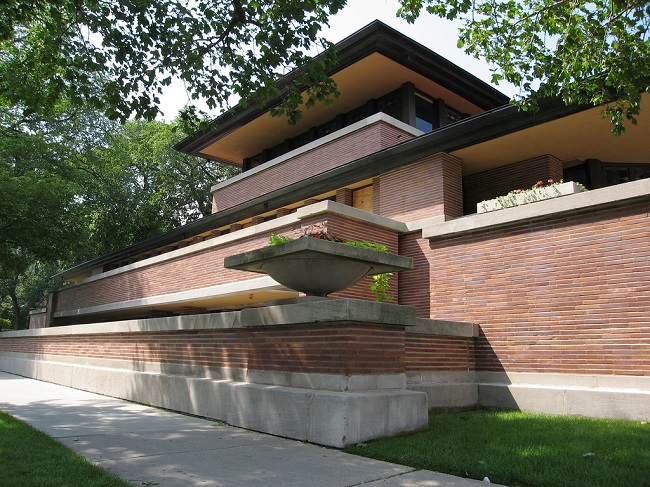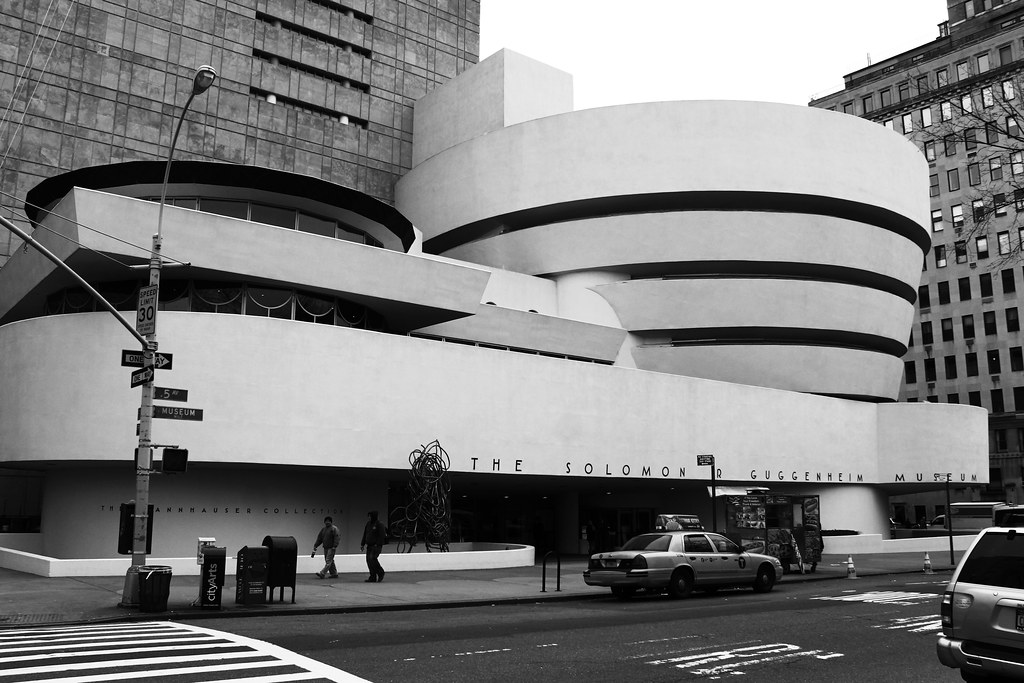FRANK LLOYD WRIGHT: THE MAN WHO BUILT AMERICA
Frank Lloyd Wright was an influential American Architect born on June 8, 1867, Wisconsin U.S. He lived for 92 years and left this world on April 9, 1959, in Phoenix, Arizona, U.S. His creative journey lasted for more than 70 years. Not only as an Architect but he also contributed as an interior designer, writer, and educator. In his lifetime he designed more than 1,000 structures, of which 532 were constructed.
ALL ABOUT LLOYD’S CREATIVE STYLE:
Wright’s Prairie Architecture caught a lot of attention during the twentieth century. His motive was to design structures that were inspired by Humanity and its environment, a philosophy which was famously known as “Organic Architecture”. His concept of Usonian Home, a unique innovation for urban planning in the United States became World famous.
He also designed innovative offices, churches, schools, skyscrapers, hotels, museums, and many other structures. Along with the structure he also designed interior elements for these buildings.
Wright gave 20 books and many articles to the literary world and spread his knowledge to students of the United States and Europe. He was titled “The greatest American Architect of all time” in 1991 by the American Institute of Architects.
EARLY LIFE:
Wright’s original name was Frank Wright. At birth, he was given the middle name Lincoln possibly in honor of Abraham Lincoln but later he adopted Lloyd as his middle name. His father was an orator, music teacher, lawyer, published composer and wandering minister. Wright’s mother was a school teacher. Frank Lloyd Wright got these artistic interests from his parents.
In his childhood, Wright used to play with geometrically shaped blocks to make various combinations of three-dimensional compositions. These exercises influenced him to enter this creative field of design. Many of his buildings are known to have geometrical clarity.
EDUCATION:
Frank Lloyd Wright graduated in 1885 from Madison High School. He then joined the University of Wisconsin-Madison in 1886 as a special student. There he took classes part-time and worked with Allan D. Conover, a Civil engineering professor. He didn’t complete his degree and left the school midway but was granted a “Doctorate of fine arts” in 1995.
Wright then worked as the dean of engineering to support his family, but he didn’t like the place and architecture around. He was very much fascinated by the great buildings of Chicago and moved to start his new journey.
FRANK LLOYD WRIGHT, CHICAGO: INSIGHT INTO HIS ARCHITECTURAL JOURNEY:
Wright came to Chicago in search of employment and that’s where his architectural journey began. He started his new life working as a draftsman with the architectural firm Joseph Lyman Silsbee. Silsbee, a magnificent sketcher inspired Wright to master simple geometry and horizontal lines. Along with it, he worked on two other family projects, all Souls church for his uncle and hillside home school for his aunts. He left his job at Silsbee as he felt that he was underpaid and joined the firm of Beers, Clay and Dutton as a designer. Soon he realized he is not ready to handle designing projects by himself so he quit his new job and returned to Silsbee with better pay. Wright also took some small works from different firms and finally started his own practice by 1890.
PRAIRIE STYLE OF ARCHITECTURE:
Prairie is a famous architectural style of the late 19th and early 20th centuries. The style emerged in Chicago from the group of young architects, including Frank Lloyd Wright. The major design elements of this style are horizontal lines, flat or hipped roofs with broad overhanging eaves, integrating landscape, windows grouped in horizontal bands, and ornamental use.

https://www.flickr.com/photos/darpi/212323100
INVENTIONS OF DIFFERENT STYLES AND CONCEPTS:
- Wright’s greatest innovation was Prairie houses that had design elements inspired by plants whose repetition can be seen in windows, carpets and other fittings. He started using new building materials such as precast concrete blocks, glass bricks, and zinc comes.
- Wright became one of the initial architects to design and install custom-made electric fittings including electric floor lamps.
- He believed the use of glass brings interaction and viewing of the outdoors. In 1928, he wrote an essay on the glass where he compared glass to mirrors of nature. Wright was acknowledged for “Prism Glass Tiles” used by him in storefronts to direct light inside. He incorporated the use of glass in his designs which fell under his philosophy of “Organic Architecture”.
- Wright also showed his creativeness in designing his own clothing. He has a unique fashion sense.
- Frank Lloyd Wright also showed his interest in Urban design. He had 41 commissions on community planning.
- He also played his role as an active Japanese art dealer. For a time this made him more money than being an architect.
HOUSES BY FRANK LLOYD WRIGHT – A FEW THAT TOP THE LIST:
Frank Lloyd Wright’s houses are very famous among all of his wonderful creations. Let’s have a peek in some of the houses designed by Wright.
- USONIAN HOUSES:
Usonian is referred to a group of approximately sixty family homes designed by Wright for the middle class whose concept began in 1934.

The “Usonian Homes” are small, single-story dwellings with no storage space. They are usually planned in L-shape to fit around a garden terrace. The main characteristics of these homes are flat roofs, use of local materials, large cantilever projections for natural cooling, clearstory window for natural lighting and radiant-floor heating.
Another key feature is that these houses have very little exposure to the front side and rear sides are open to outside. The main element in these houses is the connection between the interiors and exteriors. Wright named the sheltered parking as Carport.
- FALLINGWATER:
Falling waters by Frank Lloyd Wright is regarded as the most beautiful house among all the houses by Wright. Also known as the Kaufmann residency, it was designed as a weekend house built partly over a waterfall in 1938. His idea of organic and Japanese architecture can be seen in this beautiful creation. The house has broad windows and balconies which bring nature inside. Later it was opened to the public and was listed under “Life list of 28 places to visit before you die”.

- FRANK LLOYD WRIGHT HOME AND STUDIO:

The Frank Lloyd Wright Home and Studio was the famous architect’s residence and studio located in Chicago. He used this building to live with his family and work for two decades, where he designed over 150 buildings. When Wright purchased the property to build this house he was only 22 and recently married to Catherine Tobin. The construction took place in 1889 and was quite small; it was extensively renovated in 1895. The major changes were the kitchen was enlarged, upstairs nursery was expanded. Two new rooms were added on the backside of the house, children’s playroom and a new kitchen. Another major addition as done in 1898, studio and a corridor connecting to it was built.
Moreover, later in 2012, the architect’s home and the studio were dedicated to preserve Wright’s masterpieces and to present his work to the public.
HIS ARTISTIC CREATIONS OTHER THAN HOUSES:
- GUGGENHEIM MUSEUM:
Guggenheim, an art museum located in the Upper East Side of Manhattan. The museum was opened six months after Wright’s death in 1959. The cylindrical building becomes wider as it grows in height and was conceived as a “temple of spirit”. Its unique spiral ramp gallery starting from the ground floors ends up under the ceiling skylight. The building received a lot of criticism that it is so astonishing; it would outshine the art within. This criticism says a lot about this wonderful creation of the architect. However, the building itself is no less than an art.
- JOHNSON WAX HEADQUARTERS:
The Johnson was headquarters built is 1936 is one of the two skyscrapers designed by Wright. It is the world headquarters and administrative building of S.C Johnson and Son. Its distinctive “lily pad columns” and few other innovations were a changing point in Wright’s career when he was losing influence.
Frank Lloyd Wright was one of the inspiring architects of his time. He influenced over three generations of Architects worldwide through his works. He spread his knowledge to young architects through his books and articles.



